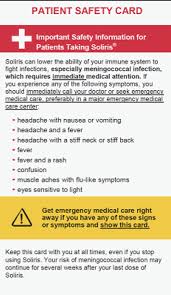A second article in a series of four planned has just been published. It is about the health economics of treatment discontinuation. Led by Giovany Orozco-Leal the article can be read HERE
The health economics may not be a subject of much interest to patients, they would be more concerned about what happened to those who stopped treatment than the finances. What happened to those who stopped treatment is covered in the first article which can be accessed via the website blog HERE.
Whilst it may not be of interest to some who are on fully funded treatment whether by private or social insurance, health economics may be important to those who are yet to access eculizumab or those who have to co pay or face excesses or life time limits in their insurance cover.
This published article is about the impact of discontinuation on the factors which make up that often misunderstood concept of COST per QALY ( Quality Adjusted Life Year).
So in at the deep end with QALY. This clinical trial study found an increase of 0.08 QALYs in those who stopped treatment over those who remained. Not, a lot but if seen against the scale of “0 to 1” used to measure quality it is more of a significant quality improvement.
Within the QALY calculation the clinical study estimated that a patient’s life year would be reduced by 0.0005% if they stopped treatment. Over a 80 year life horizon this would be measured in just hours and minutes!
From all the studies undertaken on the optimal length of treatment, a conservative prognosis would be that 33.3% of stoppers would relapse and 66.6% go into a remission.
This clinical study estimates the life time cost saving for each patient staying in remission as £4.2 million.
Eliminating 66% of patients from life time treatment at a saving of £4.2 million each would make a difference to the economic case in a health funding decision.
When seeking funding for eculizumab to treat aHUS in UK , our patient organisation’s vision for patients was ” treatment when needed for as long as needed”. Raising doubt about the economics of all on it for life at the cost of the highest dose.
More is now known about the “for as long as needed”.
This clinical trial result should help aHUS patients make a better economic case for treatment, overtaking the previous non real world assumptions about costs.
Better quality of life ,a negligible life span reduction and big cost savings for society and out of pocket expenses.
It will be even better when all get it when needed.
Article No. 750


